
Score breakdown
Things we like
- Ride and handling
- Cabin packaging
- Standard equipment
- Affordable servicing
Not so much
- 2.0-litre engine lacks oomph
- High front passenger seat
What stands out?
Australia’s biggest-selling SUV, the Toyota RAV4 goes back a long way to when it kicked off the urban SUV craze. It has matured into a competent mid-sized SUV offering plenty of standard features and technology plus a choice of efficient petrol and hybrid powertrains. This latest model RAV4 is the first to offer an off-road capable version.
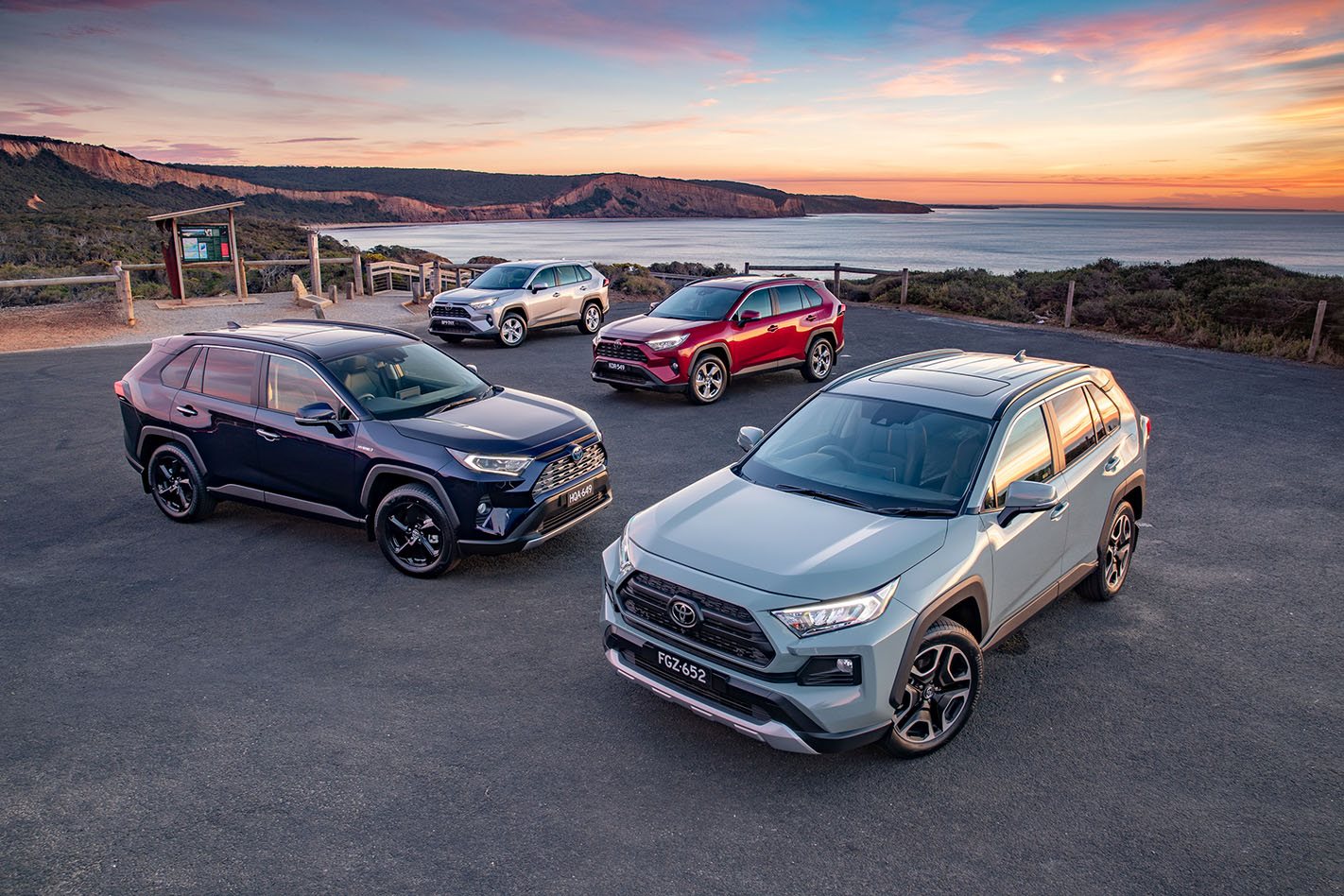
What might bug me?
Having to drive less than 80km/h on the space-saver spare until you’re able to fix your full-sized flat tyre.If you’re a taller person, bumping your head when sitting in the front passenger seat, especially if the RAV4 has a sunroof. The front seat has no height adjustment.The lack of a convenient catch in the cargo hold to easily put the seatbacks down should you need to put something big in your RAV4.
What body styles are there?
Five-door wagon only.The RAV4 is available in front-wheel drive and in all-wheel drive.It is classed as a medium SUV, lower priced.
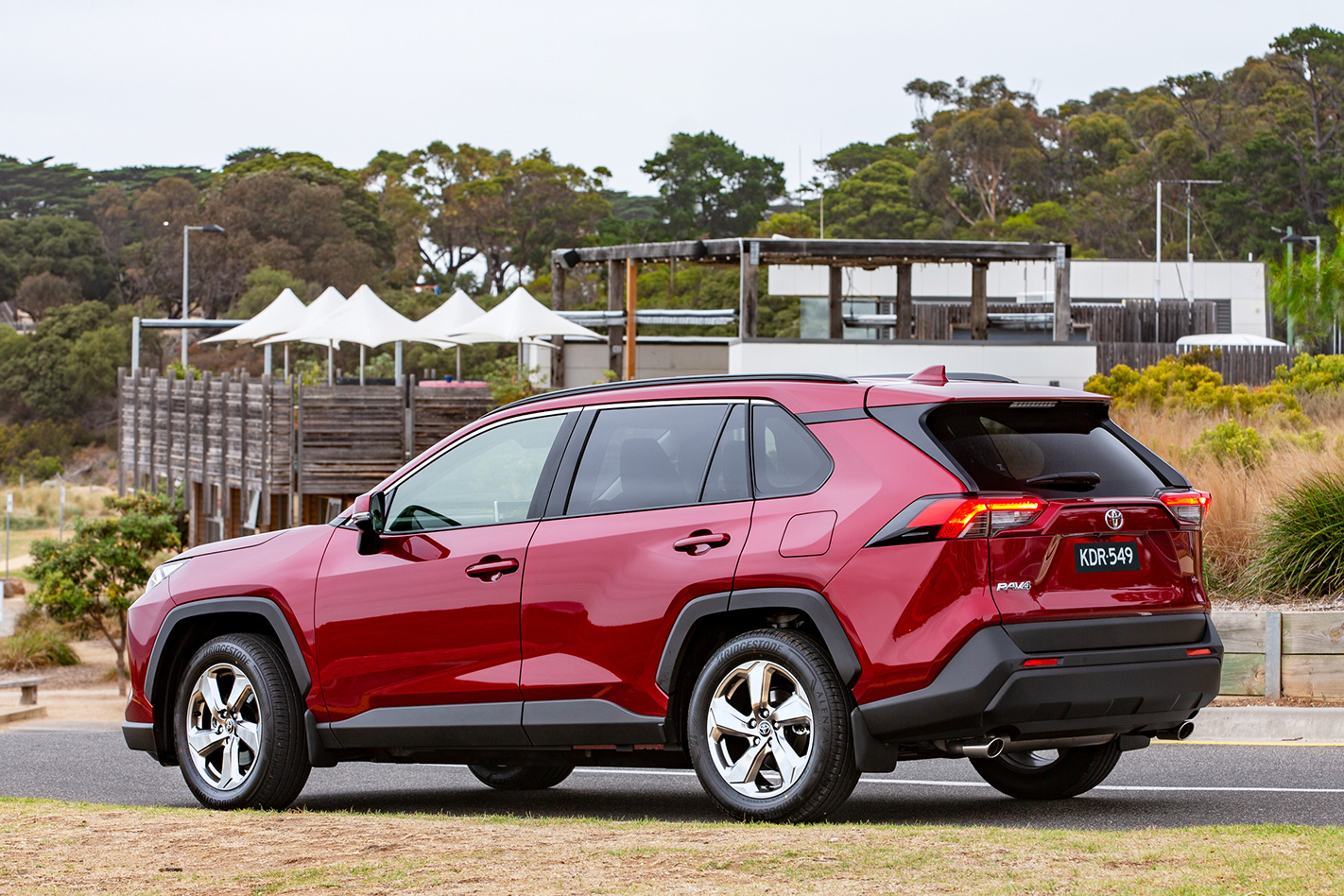
What features do all RAV4s have?
- Adaptive cruise control, speed sign recognition, rear-cross traffic alert, blind-spot monitor, and autonomous emergency braking. Manual versions have lane departure alert, while the automatics get lane-keeping assist that helps keep your RAV4 in its lane.
- Reversing camera, front and rear parking sensors.
- Air-conditioning with front and rear air vents.
- An 8.0-inch touchscreen for controlling interior functions and satellite navigation, with auxiliary and USB inputs, and Bluetooth connectivity – connecting with an iPhone allows for Siri voice commands, and Apple CarPlay/Android Auto smartphone pairing.
- An audio system with at least six speakers, with AM, FM and Digital (DAB+) radio, which can be operated from the steering wheel.
- Smart keyless entry and ignition,
- Leather-trimmed steering wheel.
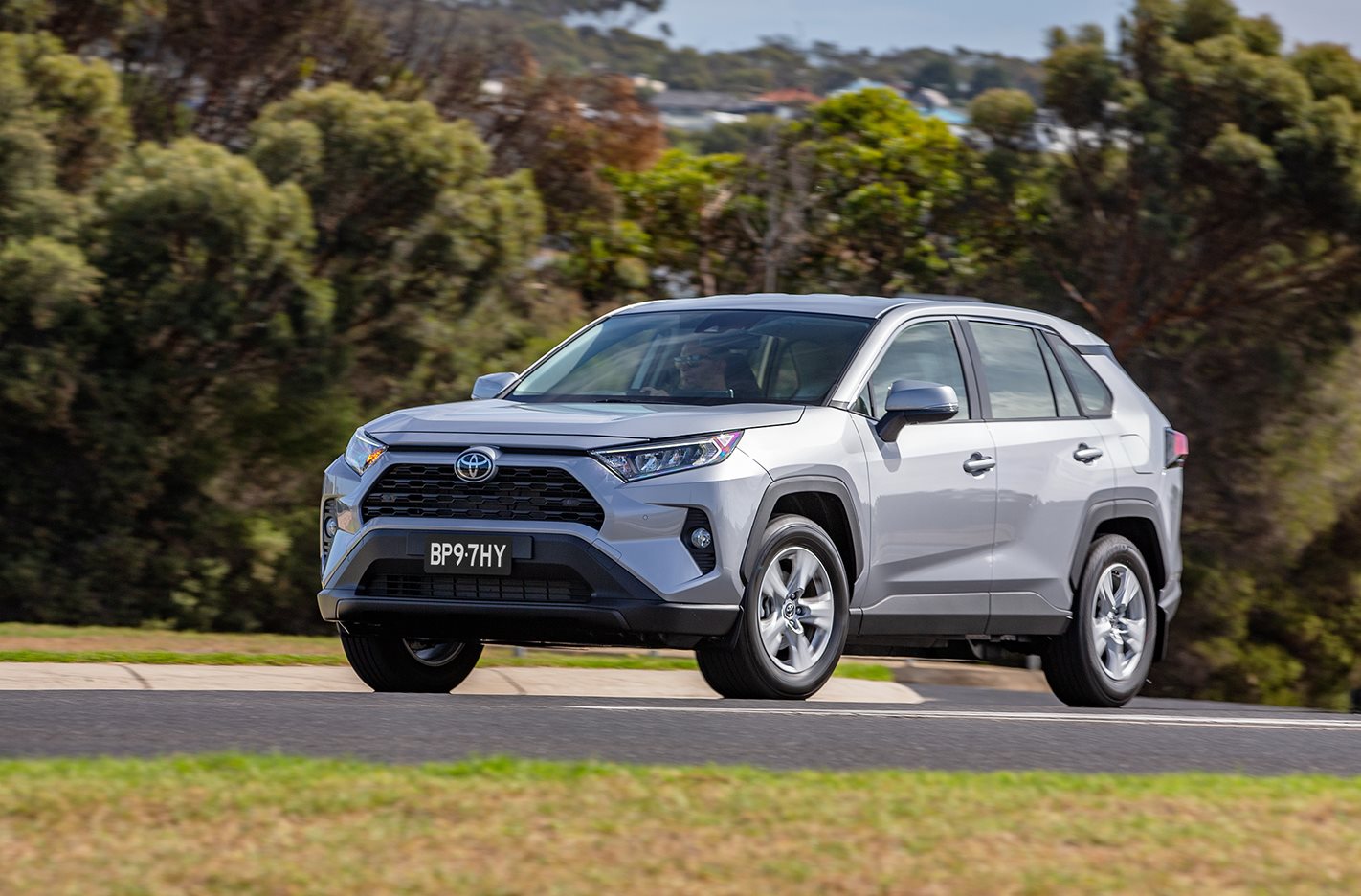
- Headlamps based on long-lasting and efficient LEDs. The headlights turn on when it gets dark and have an auto high-beam that automatically dips for oncoming traffic.
- LED daytime running lights (additional lights near the headlamps that make the car more visible)
- Front fog lamps.
- Rain-sensing windscreen wipers.
- Heated and power-folding door mirrors.
- Seatbelt warning lights for all five seats.
- Shark fin antenna, dual tailpipes, and hatch-top spoiler.
- Electric parking brake, and hill start assist that controls the brakes so that it is easier for you to start from rest on a slope.
- Alloy wheels and a space-saver spare wheel (a full-size spare is available as an option in the GX).
- Seven airbags. Electronic stability control, which can help control a skid and is mandatory on new cars. (For the placement of airbags, and more on RAV4 safety systems, please open the Safety section below.)
- The RAV4 is covered by a five-year, unlimited-kilometre warranty.
Which engine uses least fuel, and why wouldn’t I choose it?
The 2.5-litre petrol-electric hybrid uses least fuel, consuming 4.7 litres/100km on the official test for front-wheel-drive versions and 4.8 litres/100km with all-wheel-drive (city and country combined).For FWD hybrid variants, the system combines the new 2.5-litre petrol engine with a pair of motor generators to provide electric-only drive or combined petrol and electric drive to the front wheels, and electricity generation to recharge the battery.
RAV4 hybrid AWD models gain a third motor generator that drives the rear axle enabling the hybrid system to deliver up to 80 per cent of the available torque to the rear wheels, providing sure-footed performance on slippery or loose surfaces.
One of the reasons you wouldn’t choose the hybrid is the additional cost over the petrol engine, which is about $2500. You may also want the more off-road capabilities of the RAV4 Edge that’s only available with a 2.5-litre petrol engine.Of the two petrol engines in the RAV4 range, the 2.0-litre version available with the GX, GXL and Cruiser versions is the most economical, with official combined fuel consumption of 6.8 litres/100km for the GX manual and 6.5-litres/100km for CVT-auto equipped versions. The 2.0-litre versions are only available with front-wheel-drive.The manual gearbox has been designed to deliver fuel efficiency and smooth operation and features an intelligent mode switch that offers a rev-matching control for even smoother and more responsive gear shift changes.
The CVT, or continuously variable transmission, auto is the same as the one in the Toyota Corolla hatchback, which is one of the better CVTs.
Unlike some CVTs that can be quite very revvy when you take off, this unit has fixed first gear that offers strong acceleration off the line and then gears down like a traditional automatic.The third powertrain is the 2.5-litre petrol under the bonnet of the RAV4 Edge, which is linked to an eight-speed automatic gearbox that drives all four wheels. It provides more power than the 2.5-litre engine in the previous model but consumes 14 percent less fuel at a rate of 7.3 litres/100km.
What key features do I get if I spend more?
The least costly, RAV4 GX model rolls on 17-inch alloy wheels, cloth seats and comes standard with a petrol engine, manual gearbox and front-wheel drive (auto is an extra-cost option).The GX Hybrid brings a few extras along with the more efficient powertrain, including keyless start, and dual-zone climate control air-conditioning.
Step up to the RAV4 GXL and auto transmission is standard, and you get bigger 18-inch wheels fitted with wider tyres of a slightly lower profile, which improve grip marginally on hard surfaces.
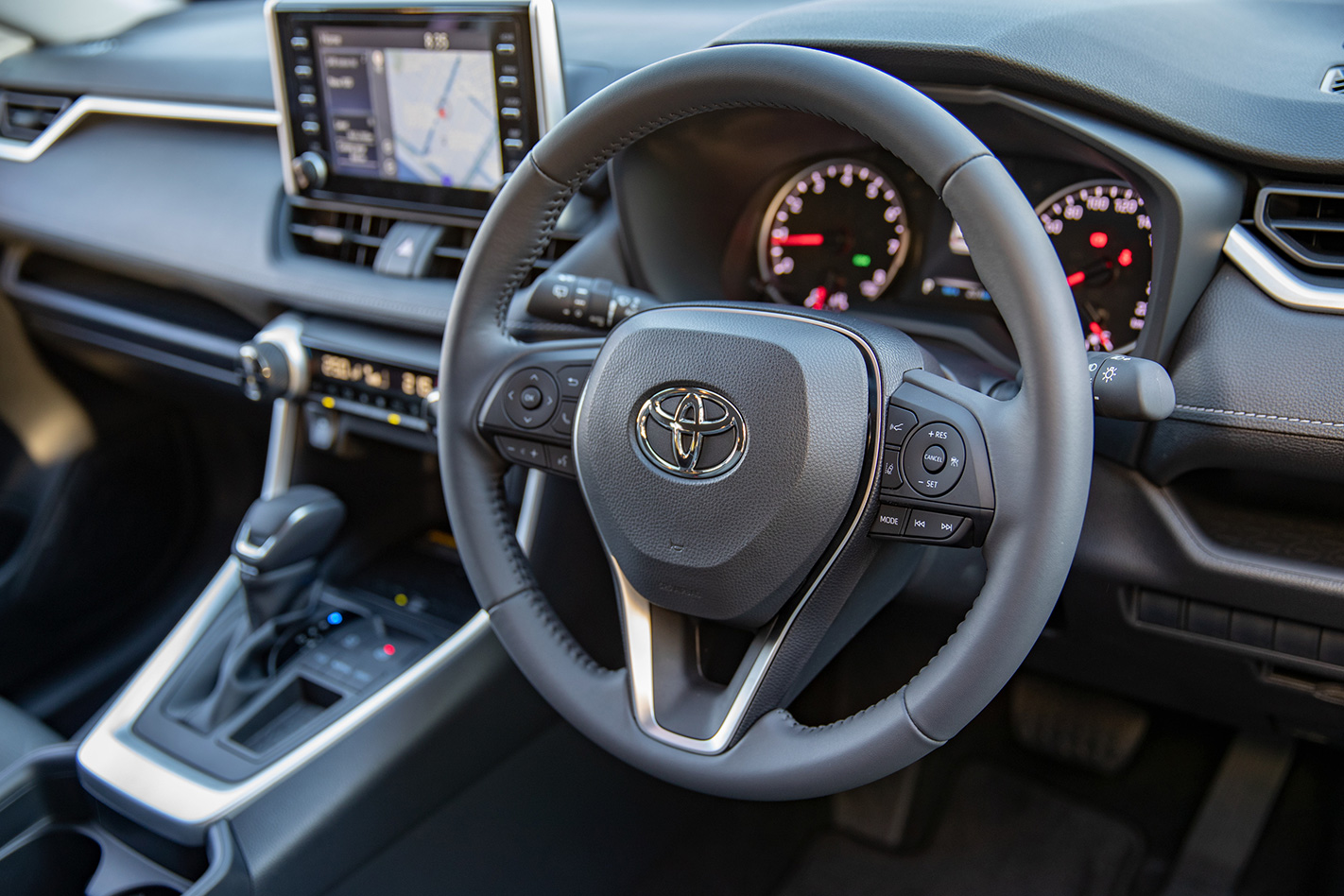
Other GXL standard features include:
- Wireless phone charger.
- Guidance lines for the reversing camera display.
- Auto-dimming rear-view mirror.
- Dual-zone air-conditioning, which allows you to set a temperature for each side of the cabin.
- Tinted privacy glass, which helps keep the cabin cooler.
- Seats trimmed in a more premium quality fabric.
- Two USB sockets for rear seats.
- Exterior embellishments including dual oval tailpipes and roof rails.
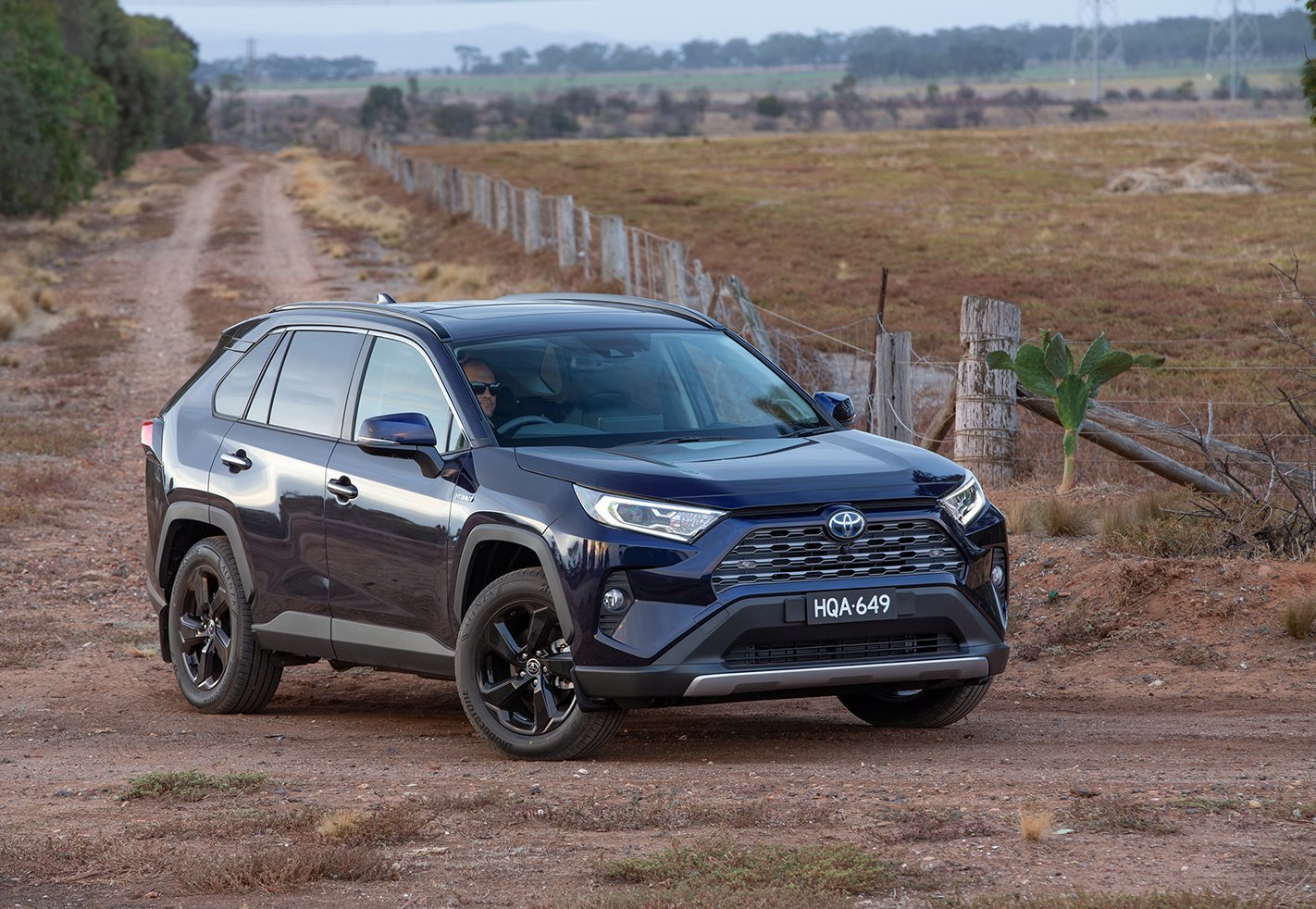
It also gains:
- Ambient interior lighting.
- Panoramic sunroof.
- Powered tailgate that can be opened remotely.
- JBL premium sound system with nine speakers rather than six.
- The petrol versions have bigger 19-inch alloy wheels with sportier tyres, with the hybrid coming with distinct 18-inch gloss-black alloys.
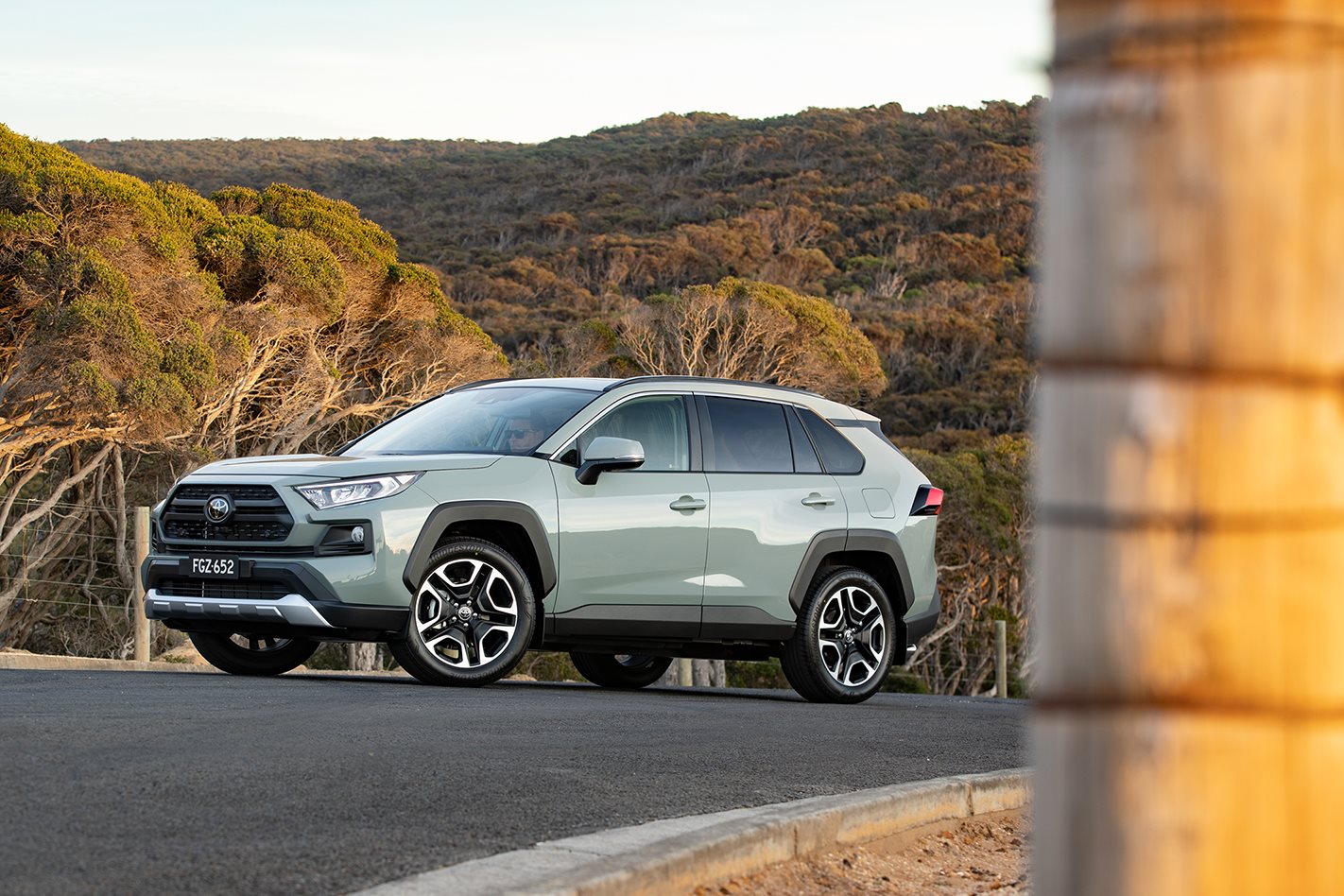
The inside features durable ‘Softex’ synthetic leather seats, heated and ventilated front seats.The Edge lacks the Cruiser’s 10-way driver’s seat power settings, and the panoramic sunroof is optional.
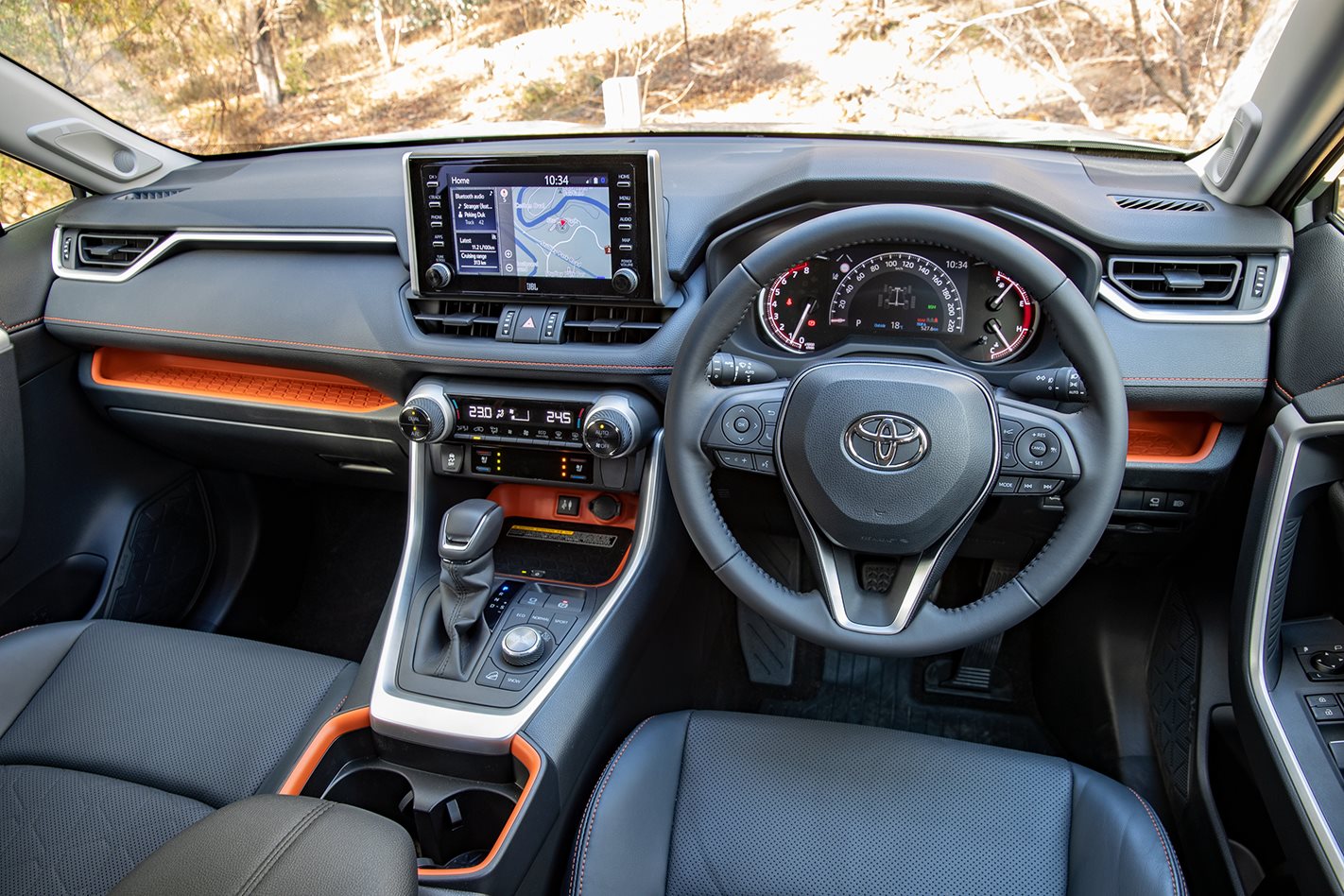
Does any upgrade have a down side?
Optioning the full-size spare tyre available with a RAV4 GX raises the floor height of the luggage bay, reducing load capacity from 580 litres to 542 litres.Spending more on a FWD hybrid RAV4 over a petrol versions sees braked towing capacity drop from 800kg to just 480kg.
Choosing the RAV4 Edge over the Cruiser means you miss out on the powered driver’s seat settings and a panoramic sunroof as standard (it’s an extra-cost option in the Edge).The panoramic sunroof that comes with the Cruiser reduces headroom.White is the only standard colour: all others cost extra.
How comfortable is the RAV4?
The fifth-generation RAV4’s cabin represents a significant step-up in design and presentation over the previous model while still prioritising comfort.It has a real feeling of space, good all-round vision and better refinement levels, though the central screen’s little buttons and bland graphics will annoy some.
Bluetooth phone and media streaming and Apple CarPlay or Android Auto is standard in all versions.
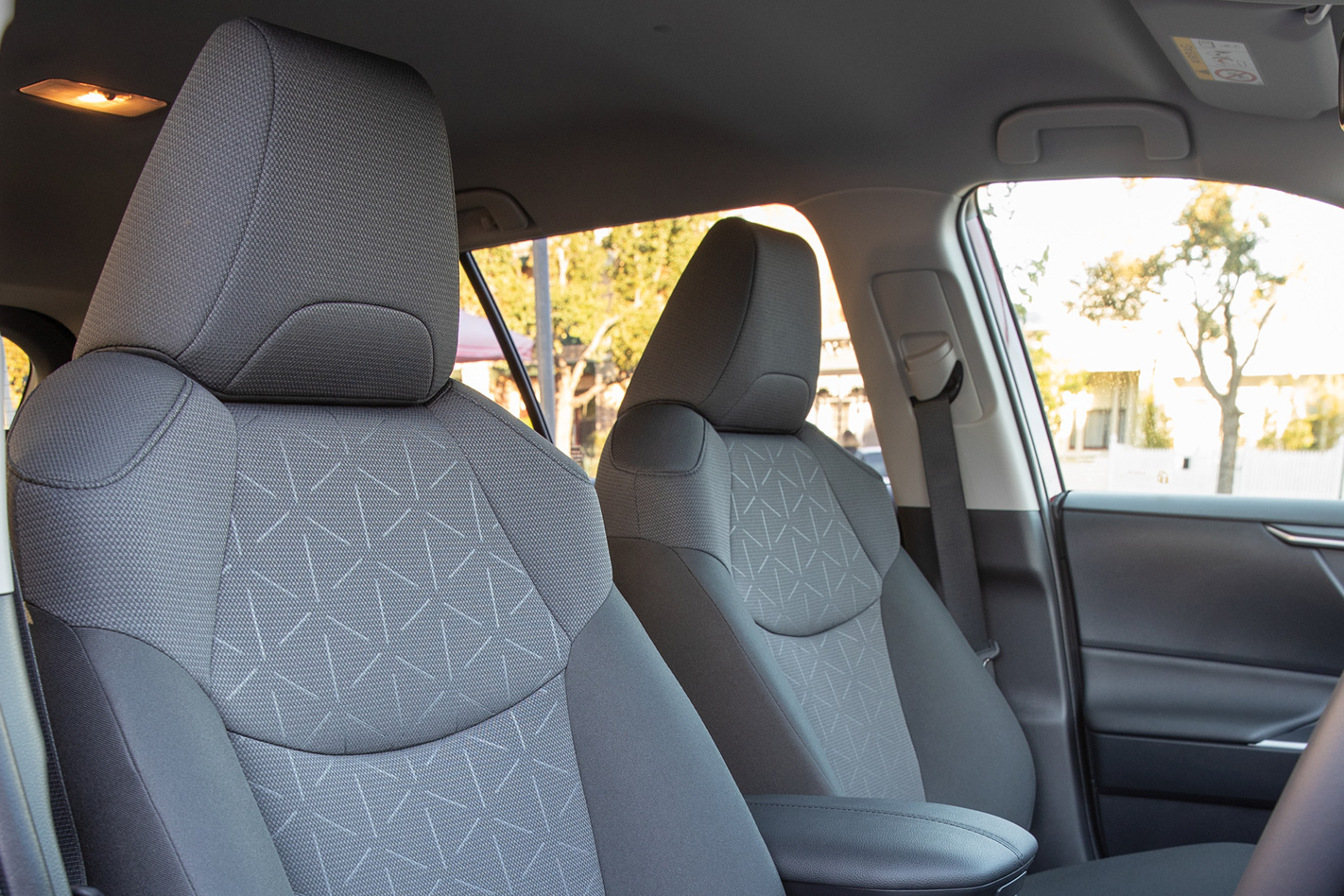
The front seats offer great support that translates to good comfort over longer trips. The driver’s seating position is good, but the lack of a front-passenger seat height adjustment can restrict headroom for taller people, particularly in RAV4s fitted with the panoramic sunroof.GXL versions and above bring the more advanced version of adaptive cruise control that can operate all the way down to 0km/h, allowing stop-start traffic jams to be negotiated by automatically taking care of your speed and separation to traffic which helps reduce fatigue and frustration.On the road, the chassis is surprisingly adept at dealing with lumpy bitumen, with the suspension recovering without a secondary bounce.Aside from the hybrid sounding a little coarse at higher revs, the RAV4 is very quiet.
What about safety in a RAV4?
Autonomous emergency braking, stability control, seven airbags, a reversing camera, front and rear parking sensors and rear seatbelt reminders are standard on all RAV4s.
Two of the airbags are placed directly in front of the driver and front passenger, and a third protects the driver’s knees. An airbag outside each front seat protects front occupants from side impacts at chest level. And curtain airbags extending down each side of the car protect front and rear occupants at head level.Adaptive cruise control is also standard, and all versions except the GX manual have lane-keeping assist that helps keep your RAV4 within the lines if you become distracted. The GX manual makes do with lane departure alert that uses a camera to monitor lane markings and warns if you drift towards an adjacent lane without indicating.
MORE: Active safety features explainedA blind-spot monitor alerts you to the presence of another vehicle alongside you to the rear, which might not show in your external mirrors. And a rear cross-traffic alert warns you if another vehicle is about to cross your path while you’re reversing.The Australasian New Car Assessment Program (ANCAP) is yet to assess the fifth-generation RAV4.
I like driving – will I enjoy a RAV4?
You’ll get the most enjoyment out of the hybrid versions, and the 2.5-litre petrol-powered RAV4 Edge. The 2.0-litre petrol feels a little sluggish up hills or when trying to overtake, especially when you have a few people on board. That said, it’s more than adequate for city driving.The continuously variable transmission (CVT) automatic gearbox works well with each powertrain, especially the more powerful hybrid, and is rarely late to keep up with varied terrain, or sudden braking or acceleration.
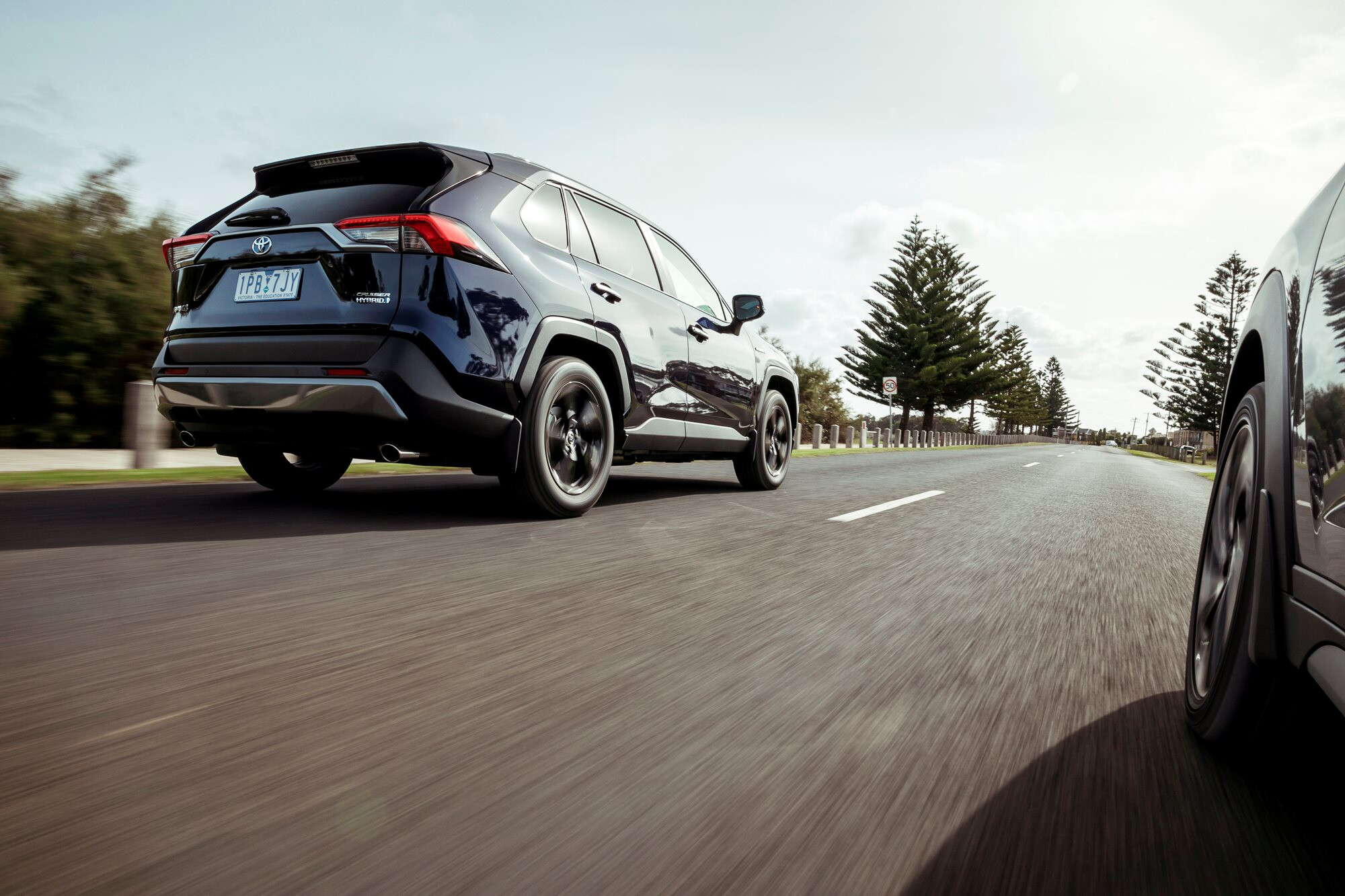
The ride is smooth and enjoyable in any RAV4. The chassis is well tuned for Australian road conditions and feels incredibly composed on lumpy surfaces, absorbing dips, potholes and ruts. This is complemented by quick and responsive steering.Grip is naturally better in the all-wheel-drive versions than those that drive their front wheels only, with the latter requiring the electronic traction control to do its job at lower speeds, particularly on wet surfaces.
How is life in the rear seats?
The RAV4 seats three at the rear, for five seats in total. Rear legroom is good and the floor is almost flat, giving the person in the middle more space. The seats are fairly flat but comfortable.All RAV4s have air-conditioning vents and all but the GX (pictured) have two USB sockets behind the centre console.
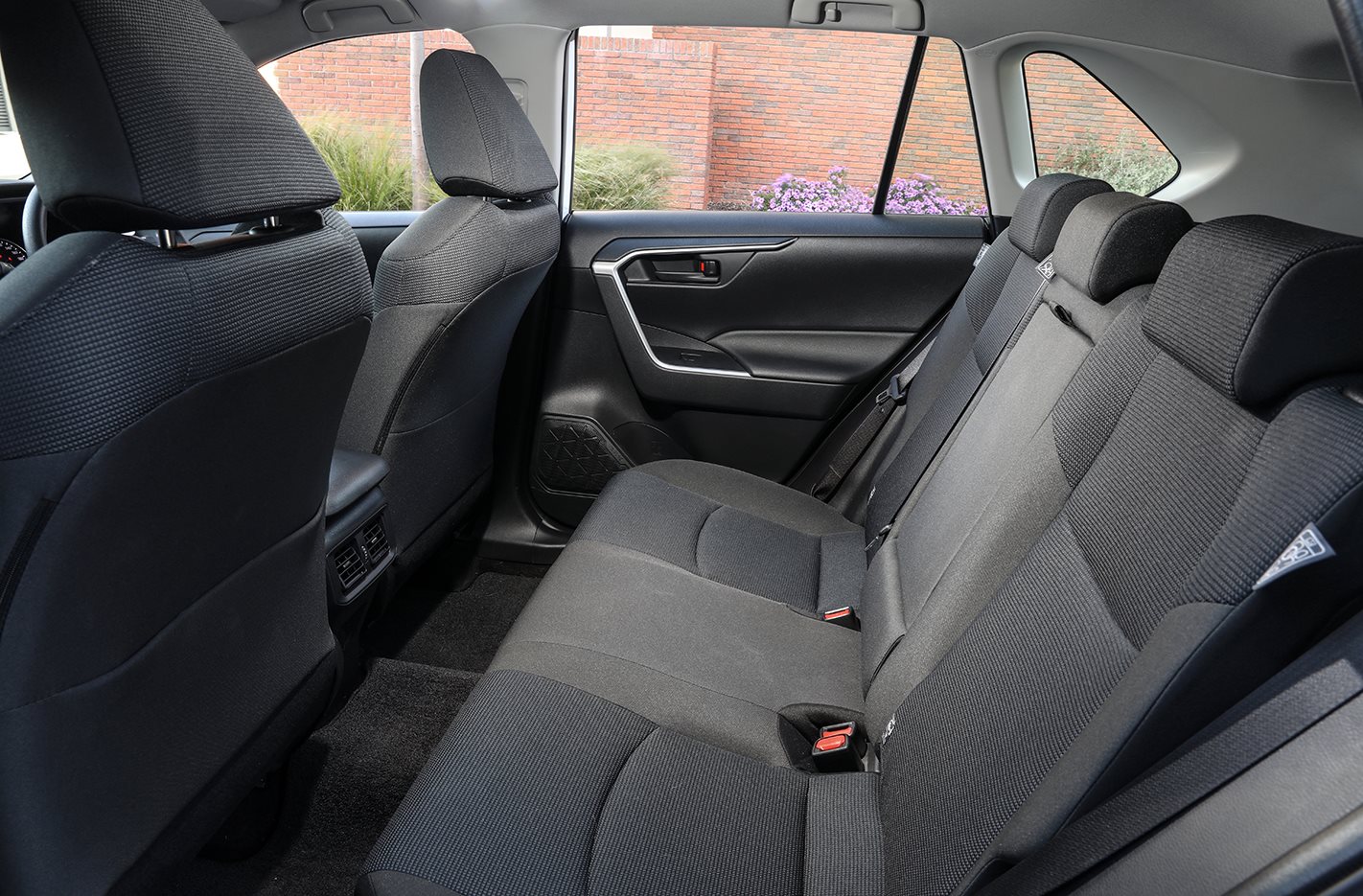
How is it for carrying stuff?
The load space is fairly broad and helped by a 60/40 split-fold seatback, though the RAV4 does lack a handy catch to flip the seat backrests down from the cargo area.
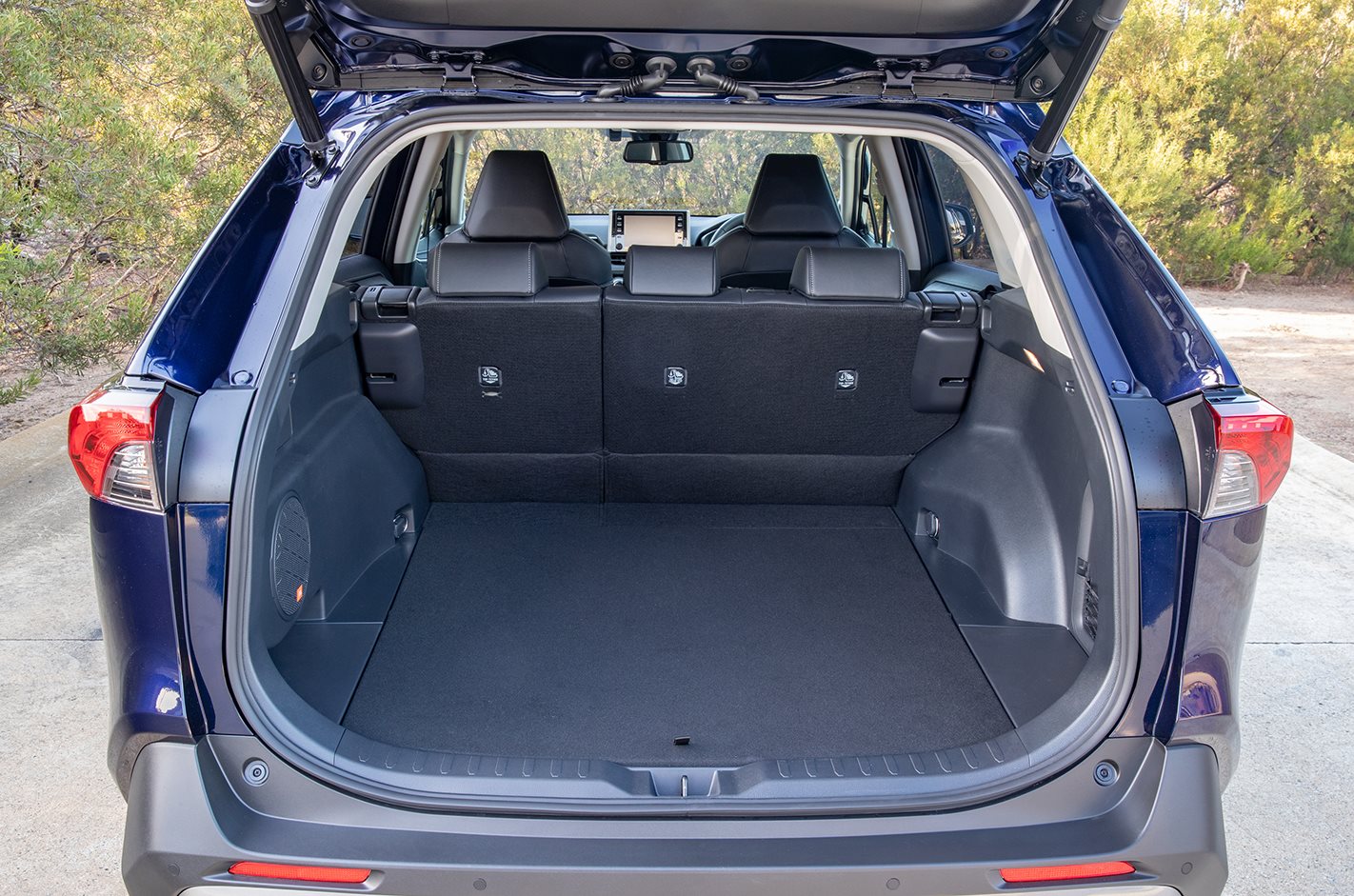
The RAV4 won’t tow as much as most other medium SUVs. The limit for 2.0-litre models is only 800kg and the FWD hybrids just 480kg. The AWD hybrids and 2.5-litre Edge can haul a handy 1500kg.
Where does Toyota make the RAV4?
All RAV4s are produced in Japan.
What might I miss that similar cars have?
The RAV4 is one of the better equipped medium SUVs on the market and with a choice of petrol and hybrid options the range covers most bases. However, there are some things it lacks that some of its key rivals offer such as a third row of seats: The Nissan X-Trail, Mitsubishi Outlander and Volkswagen Tiguan Allspace medium SUVs each have a seven-seat option.
A turbocharged petrol engine with more power, as offered on the Volkswagen Tiguan, Ford Escape, Peugeot 3008, and Mazda CX-5.
A diesel option, as available with most rivals including the Escape, X-Trail, CX-5, Renault Koleos, and Hyundai Tucson.
Other rivals you may want to consider include the Subaru Forester and Kia Sportage.
I like the RAV4, but I can’t choose which version. Can you help?
The GXL Hybrid AWD is our pick, with the extra cost up from the GX justified by some handy extra equipment, and enhanced interior ambience. And the hybrid brings considerably more power but better fuel economy than the GXL 2.0-litre. We also like the additional traction the AWD provides, but that’s not as important if most of your driving is going to be around town.
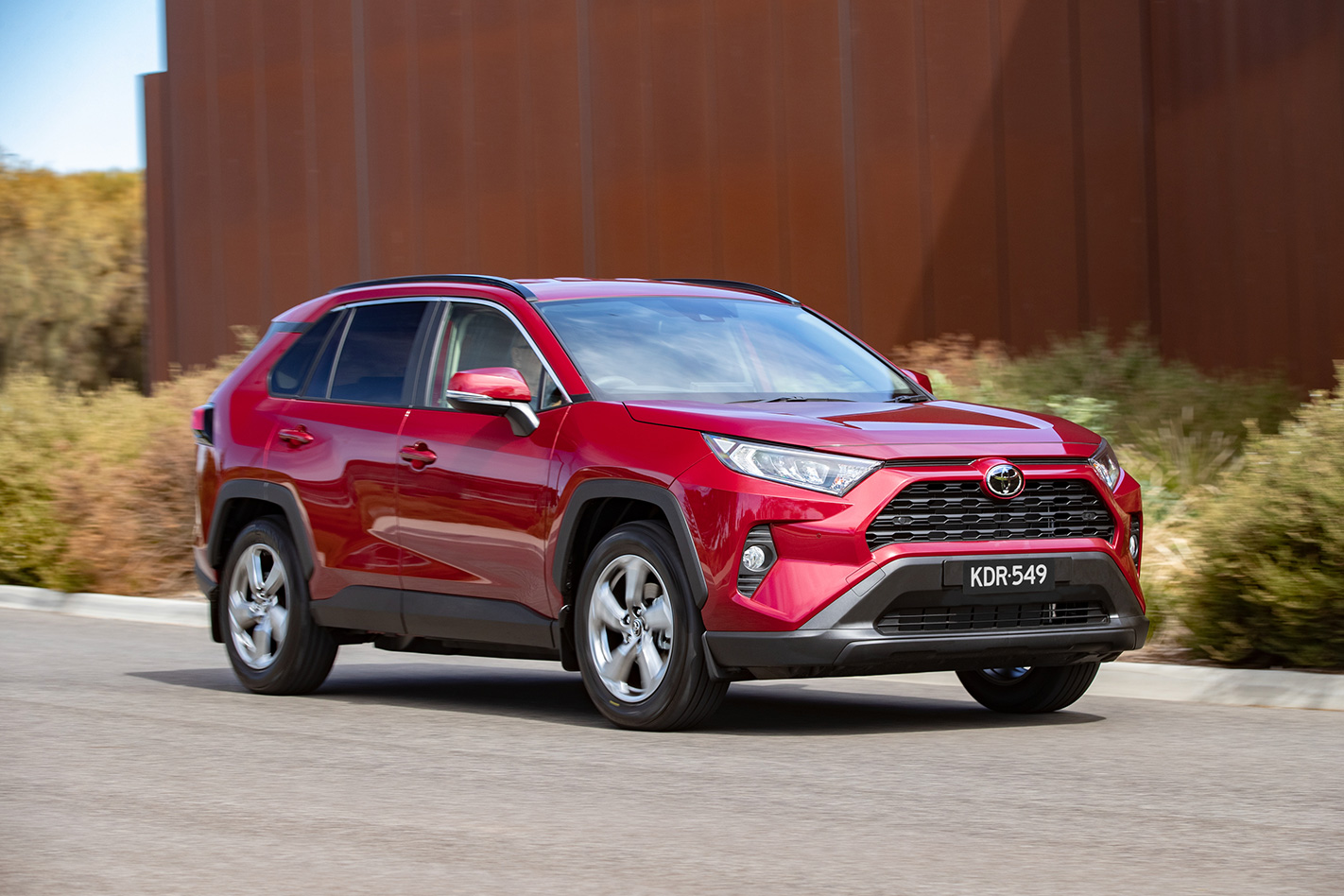
Are there plans to update the RAV4 soon?
The fifth-generation RAV4 arrived in May 2019.Toyota added Apple CarPlay/Android Auto smartphone pairing at the end of 2019. Toyota will be able to retrofit the system to RAV4’s purchased before for about $200.A slight update for the 2021 model year added a few extra features to the entry level GX.
Score breakdown
Things we like
- Ride and handling
- Cabin packaging
- Standard equipment
- Affordable servicing
Not so much
- 2.0-litre engine lacks oomph
- High front passenger seat
We recommend
-
 Reviews
Reviews2016-2018 Toyota RAV4 Range Review
The Toyota RAV4 is a comfortable mid-sized SUV that rides nicely and corners well. You can choose diesel or petrol power, service costs are low, and auto braking is available.
-
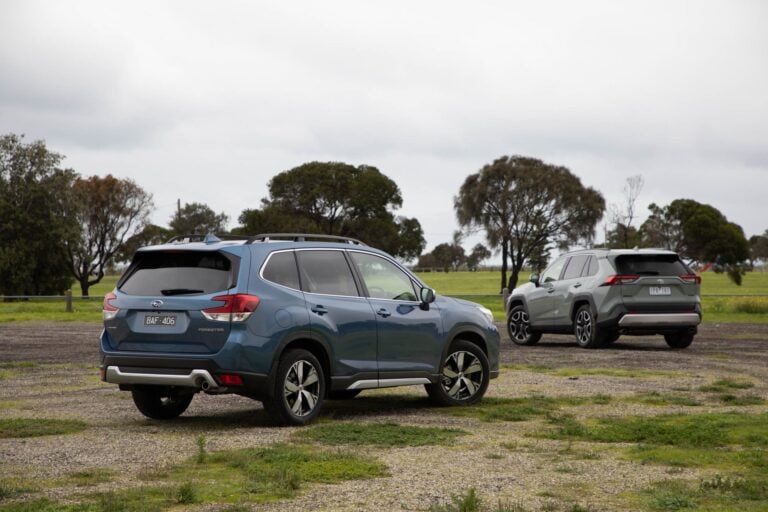 Comparisons
ComparisonsSubaru Forester Hybrid vs Toyota RAV4 Hybrid spec comparison
Subaru's first ever hybrid arrives ready to do battle with Toyota's accomplished RAV4 Hybrid
-
 Comparisons
Comparisons2021 Hyundai Tucson vs Toyota RAV4 compared
Hyundai readies a RAV4 fighter in its new Tucson mid-size SUV. Here’s how the two stack up against one another



